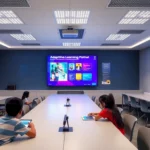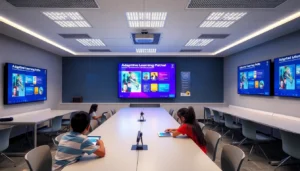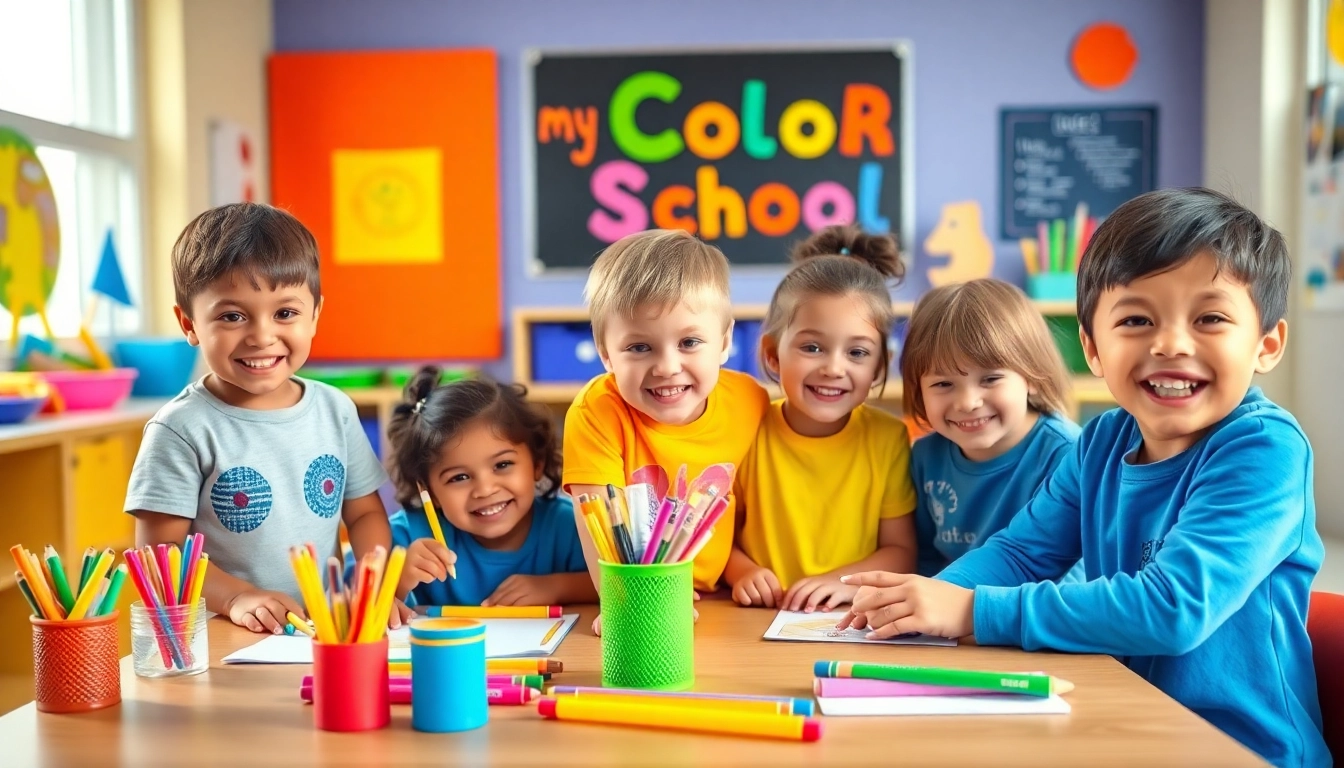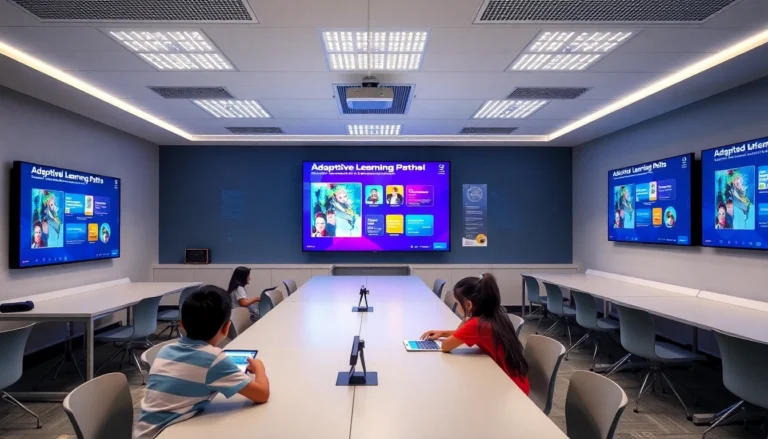Understanding the Role of Color in Educational Environments
Color is more than just an aesthetic choice in educational settings—it is a vital component that influences student behavior, engagement, and overall learning outcomes. From the vibrant hues of classroom decor to the systematic color-coding strategies employed for classroom management, understanding the psychological and practical implications of color can transform how educators facilitate learning. For those committed to leveraging color to foster a conducive learning environment, My Color School offers a comprehensive framework that integrates color literacy into curriculum design and classroom management. This integration not only enhances visual appeal but also promotes cognitive development, emotional regulation, and inclusivity across diverse student populations.
The Psychological Impact of Colors on Student Behavior
Research indicates that colors have profound effects on human psychology and, by extension, student behavior. For example, blue hues tend to promote communication and relaxation, making them ideal for settings requiring calm and focus. Green, associated with balance and renewal, can reduce anxiety and promote concentration. Red, a stimulating color, often increases energy levels but can also trigger agitation if overused. Orange and yellow stimulate joy, enthusiasm, and alertness, which are beneficial during creative activities and cognitive tasks, respectively.
Case studies reveal that incorporating these colors strategically into classroom environments can lead to measurable improvements in student mood and behavior. A study conducted in primary schools showed that classrooms painted with calming blue and green reduced disruptive behaviors by up to 20%, while spaces that used red and yellow created more alertness and participation. Understanding these nuances allows educators to tailor classroom aesthetics to specific teaching objectives and student needs.
Moreover, color psychology informs the use of color coding for behavioral management, where specific colors signal behavioral expectations or consequences. Such systems, grounded in psychology, streamline classroom management and foster a sense of order and predictability.
Color Coding Systems and Classroom Management Strategies
Effective classroom management often hinges on clear, consistent cues—one of which is well-designed color coding. Schools utilize various systems that assign colors to behaviors, academic zones, or activity types, simplifying communication and expectations for students of all ages. For instance, a common system may designate yellow as a warning zone, orange as a cautionary zone, and red as a serious concern zone. This visual hierarchy facilitates immediate recognition of behavioral status and guides student responses without verbal instructions.
Implementing these systems requires careful planning. First, educators should establish the meaning associated with each color, ensuring that students understand and remember the codes. Visual cues such as colored wristbands, signs, or classroom zones can reinforce these signals. Training staff to consistency enforce and model the system is crucial for effectiveness.
Research indicates that such color-based systems can lead to a 15-25% reduction in classroom disruptions when integrated with positive reinforcement strategies. Teachers also benefit from decreased verbal correction, allowing more instructional time and less classroom chaos.
However, challenges such as over-complication or misinterpretation can occur. To mitigate these issues, simplification and regular reinforcement through classroom routines and visual reminders are recommended.
Incorporating My Color School Principles for Optimal Learning
The principles championed by My Color School center on deliberate, research-backed use of color to elevate educational outcomes. These principles emphasize creating psychologically supportive, visually stimulating, yet non-distracting environments that cater to a diverse student body.
Key strategies include: designing classrooms with harmonious color schemes aligned to activity type, using color cues to guide behaviors, and integrating color literacy as a core component of the curriculum. By prioritizing intentional color use, educators can influence mood, focus, and inclusivity while fostering an environment conducive to both academic and socio-emotional growth.
Implementation involves understanding individual differences—students’ cultural backgrounds, neurodiversity, and personal preferences—and adjusting colors accordingly. For instance, brighter shades may energize active learners, whereas softer tones might support students with sensory processing differences.
Implementing My Color School Techniques in Classroom Design
Designing Colorful and Engaging Educational Spaces
Effective classroom design marries functionality with visual engagement. Colorful spaces can stimulate curiosity and foster positive emotions. Utilizing a strategic mix of primary and secondary colors—such as bright yellow for cheerfulness or calming blue for concentration—can energize or relax students as needed.
Color zones should be purposeful: a reading corner painted in soothing green may encourage calm, while a creative arts area in vibrant orange may inspire enthusiasm. Incorporating color through furniture, wall decor, and instructional materials creates a cohesive visual language that signals different activities, making navigation intuitive for young learners.
Design professionals recommend using large swaths of muted colors as backgrounds, accented with brighter hues for focal points. This approach prevents overstimulation while maintaining visual interest.
Selecting Effective Color Palettes for Different Subjects
Different academic subjects benefit from tailored color palettes. For example:
- Mathematics and Logic: Cool tones such as blue and teal support focus and analytical thinking.
- Arts and Creativity: Bright, varied colors like yellow, red, and purple foster inspiration and originality.
- Language and Reading: Soft, neutral shades with accents promote calmness and facilitate concentration.
Using digital tools like Coolors provides educators with a vast array of harmonious palettes that enhance subject-specific environments, ensuring visual consistency and pedagogical effectiveness.
Tools and Resources to Enhance Classroom Aesthetics
Enhancing classroom aesthetics extends beyond choosing colors. It involves integrating resources that support color literacy and management:
- Color palette generators to create and customize schemes
- Printable decor bundles designed with color themes from Schoolgirl Style
- Digital apps for analyzing color contrast and accessibility
Implementing these resources ensures classrooms are vibrant, engaging, and inclusive, catering to students with sensory sensitivities or visual impairments.
Curriculum Development with a Focus on Color Literacy
Teaching Color Vocabulary Across Languages and Grade Levels
Building a comprehensive understanding of color begins with vocabulary development. Early learners can start with basic terms like red, blue, and yellow, then progress to complex shades such as turquoise or maroon. Employing color word activities across multiple languages enriches cultural awareness and cognitive flexibility.
Strategies include multilingual picture books, interactive flashcards, and classroom labels. For example, teaching color names in English, Spanish, French, and Mandarin broadens students’ linguistic skills while reinforcing color recognition.
Research highlights that multi-sensory approaches—combining visual, auditory, and tactile activities—accelerate mastery of color vocabulary in young children.
Creative Activities to Foster Color Recognition and Expression
Hands-on activities stimulate both understanding and artistic expression. Some effective approaches include:
- Color scavenger hunts within the classroom or schoolyard
- Mixing paints to explore color combinations
- Creating color-themed stories or poems
- Designing personal color wheels or collages
These activities nurture creativity and reinforce recognition, mastery, and societal associations of colors, supporting abstract thinking and cultural intelligence.
Assessing Student Understanding of Color Concepts
Evaluation methods range from formative observations during activities to formal assessments like quizzes and portfolios. Incorporating digital quizzes that require students to match colors to descriptions or identify shades in images provides immediate feedback.
Using rubrics that focus on recognition, vocabulary use, and expression ensures a holistic understanding. Additionally, teacher observations can identify students who need targeted support or interventions.
Data collection from these assessments informs instructional adjustments and curriculum refinement, fostering continuous improvement in color literacy achievement.
Benefits of Using My Color School for Educators and Students
Improved Focus, Productivity, and Emotional Well-being
Applying color principles from My Color School enhances classroom atmospheres that promote calmness and alertness. Well-chosen color schemes reduce cognitive overload, improve focus, and elevate mood, all of which contribute to increased productivity and emotional resilience.
For instance, research demonstrates that classrooms with balanced, soothing color palettes can increase student attention spans by up to 25%, while vibrant accents energize students during active or creative tasks.
Enhancing Inclusivity Through Diverse Color Strategies
Color strategies also address inclusivity by considering neurodiversity and cultural differences. Employing high-contrast color schemes improves accessibility for students with visual impairments or dyslexia. Using culturally meaningful colors validates students’ backgrounds, fostering a sense of belonging and safety.
Utilizing a wide range of color options and adjustments ensures that all students can engage fully with learning materials and environment.
Success Stories and Case Studies of Color-Driven Learning
Across various educational settings, schools implementing My Color School’s strategies report noticeable improvements. For example, a primary school in New York integrated a color literacy curriculum with redesigned classroom aesthetics and observed a 30% increase in student participation and a decline in behavioral incidents by nearly 20% over a semester.
Another case highlights that inclusive color practices in a multicultural classroom improved peer interactions and reduced sensory overload among students with autism spectrum disorders.
Future Trends in Color Education and Digital Integration
Innovative Technologies Supporting Color Education
Emerging tools like augmented reality (AR) and virtual reality (VR) are poised to revolutionize color literacy. AR apps can overlay color labels and explanations onto real-world objects, making learning immersive and interactive. Similarly, VR environments can simulate different lighting and color schemes, deepening understanding of color effects.
Artificial intelligence (AI) is also facilitating personalized color recommendations based on individual learning preferences and neurodiversity profiles. These technologies enable adaptive learning experiences that cater to diverse needs.
Online Resources and Interactive Platforms from My Color School
My Color School offers a suite of digital resources—including interactive modules, color palette generators, and downloadable curriculum materials—that make integrated color literacy accessible globally. These platforms promote self-paced learning for educators and students, supporting remote and hybrid education models.
Community-based forums and professional development webinars foster collaborative growth, empowering educators to share best practices and innovative ideas built around color pedagogy.
Advancing Color Literacy for a Global Classroom
As the world becomes increasingly interconnected, understanding and applying color literacy across cultures is crucial. International collaborations harness diverse perspectives on color symbolism, fostering intercultural competence. Curricula incorporating global color contexts prepare students for a multicultural workforce and diverse societies.
Future initiatives may include multilingual digital stories, international art exchanges, and culturally tailored curriculum modules, with organizations like My Color School leading the effort to democratize color education worldwide.



















